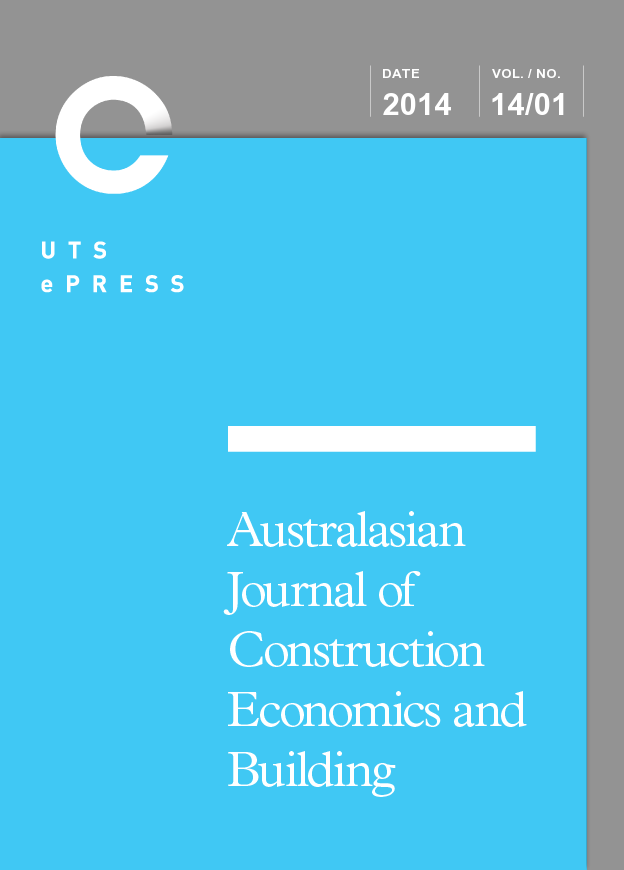Quality of road construction projects in Sweden between 1990 and 2010
Main Article Content
Abstract
It has been reported that productivity developments in construction are slow compared to other sectors. Measuring productivity is however not easy and it might have been underestimated due to deficiencies in the index that is used when the value added in current prices is converted into value added at constant prices. A central problem when deflating nominal prices is that the deflation should only take away price changes for identical products and not price changes related to quality changes and improvements necessitated by new environmental conditions and legislation as well as demand for higher safety. The aim of this project is to help fill this gap by looking at the quality changes over time in road construction. A combination of comparative studies and interviews with practitioners from public and private sectors that are involved in road construction projects were conducted. It was found that there had been both direct quality changes in the roads, primarily to improve safety on the roads and for noise protection, and indirect quality changes related to building in more difficult circumstances because of giving higher weight to other social objectives, especially environmental objectives. As these quality increases are not taken into account when productivity is measured, productivity improvements could be underestimated by around 1% per year.
Article Details
Section
Authors who publish with this journal agree to the following terms:
a) Authors retain copyright and grant the journal right of first publication with the work simultaneously licensed under a Creative Commons Attribution License that allows others to share and adapt the work with an acknowledgement of the work's authorship and initial publication in this journal.
b) Authors are able to enter into separate, additional contractual arrangements for the non-exclusive distribution of the journal's published version of the work (e.g., post it to an institutional repository or publish it in a book), with an acknowledgement of its initial publication in this journal.
c) Authors are permitted and encouraged to post their work online (e.g., in institutional repositories or on their website) prior to and during the submission process, as it can lead to productive exchanges, as well as earlier and greater citation of published work (See The Open Access Citation Advantage Service). Where authors include such a work in an institutional repository or on their website (ie. a copy of a work which has been published in a UTS ePRESS journal, or a pre-print or post-print version of that work), we request that they include a statement that acknowledges the UTS ePRESS publication including the name of the journal, the volume number and a web-link to the journal item.
d) Authors should be aware that the Creative Commons Attribution (CC-BY) License permits readers to share (copy and redistribute the work in any medium or format) and adapt (remix, transform, and build upon the work) for any purpose, even commercially, provided they also give appropriate credit to the work, provide a link to the license, and indicate if changes were made. They may do these things in any reasonable manner, but not in any way that suggests you or your publisher endorses their use.
